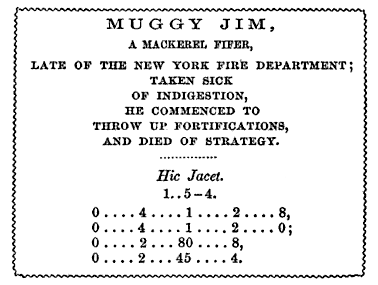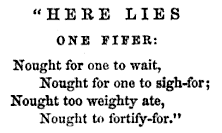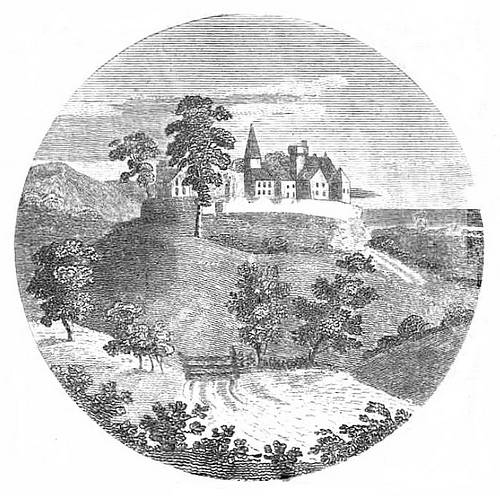Writing in the New York Mercury in 1863, Robert Henry Newell noted the curious pine-board epitaph of a Union fifer at Manassas:

The lower portion “had to be inscribed figuratively, in order to get it all upon the narrow monument.” It means:

“In all its praise of that quiet sleep in which there are no anticipations to be disappointed, no gluttony to make sick, and no Confederacies to guard against,–the verse will be plain to all.”




